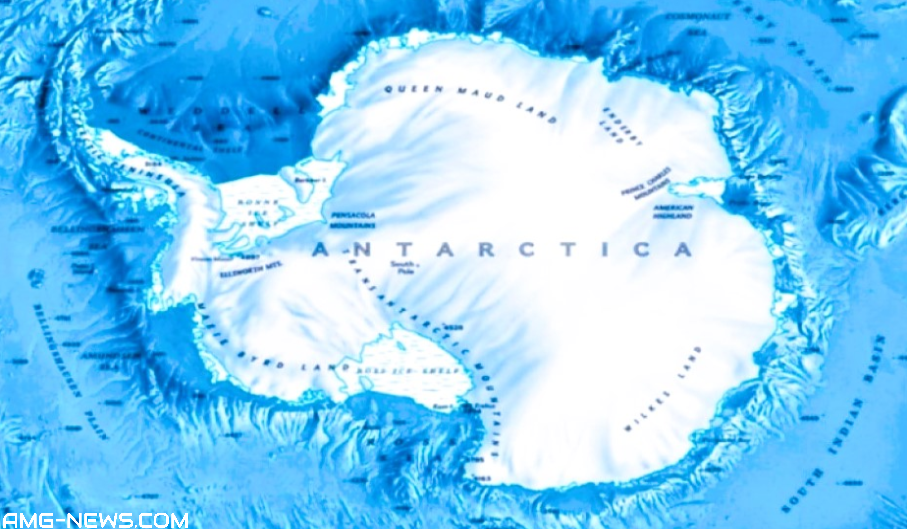By Medeea GreereOctober 14, 2023Updated:October 14, 2023No Comments10 Mins Read

SHARE
Raven Rock: The Story of the U.S. Government’s Secret Plan to Save Itself – While the Rest of Us Die (video)
Medeea Greere, an independent publisher, is now on Telegram at https://t.me/AMGNEWS2022 and exists only on reader support as we publish Truth, Freedom and Love for public awareness. Thank You for your support!
Hiding in secret underground bunkers, eating wild birds and pets and saving secretaries but not wives: How government elites planned to survive a nuclear attack.
- The US has a secret network of bunkers primarily built during the Cold War era to protect government officials in case of an atomic bomb.
- Presidents Kennedy, Eisenhower, Roosevelt and Truman knew there was only enough room for an elite few, but still assured citizens they would be safe in the event of a nuclear war.
- There is a bunker for officials under the White House, near Camp David and several scattered around the US.
- The wives of public officials would not be admitted to the elite hideout but secretaries would.
- There was also a plan to survive off rabbit meat, wild birds and civilian pets when food rations ran out
- President George Bush, Vice President Dick Cheney and Secretary of State Condoleezza Rice were ushered into the bunker under the White House on 9/11
In a plan as brutal as it was logical, the President and his inner circle would be saved while tens of millions of ordinary Americans would be incinerated. Realizing that there was no way to save the population, the conclusion was that ‘the government would protect itself and let the rest of us die’ writes national security expert Garrett M. Graff.
In The Event Of Attack, Here’s How The Government Plans ‘To Save Itself’: On the Raven Rock Bunker just outside of Waynesboro, Penn.
It’s a bunker that dates back to the late 1940s, right at the beginning of the atomic age, as the government began to think about what it was going to mean to build evacuation facilities, in case something happened to Washington.
Raven Rock is this massive, hollowed-out mountain. It’s a free-standing city … with individual buildings, three-story buildings, built inside of this mountain. It has everything that a small city would — there’s a fire department there, there’s a police department, medical facilities, dining halls.
The dining facility serves four meals a day, it’s a 24 hour facility, and it was sort of mothballed to a certain extent during the 1990s as the Cold War ended and then was restarted in a hurry after Sept. 11 and has been pretty dramatically expanded over the last 15 years, and today could hold as many as 5,000 people in the event of an emergency.

On what the IRS would do
Not even nuclear war would stop the taxes. So the IRS had all their plans for how they would levy taxes on nuclear damaged property and how they would raise revenue to keep the government going.
The Federal Reserve built this bunker in Mount Pony, Va., where they kept $2 billion cash, which would’ve been the money that we would’ve needed to keep the economy going for 18 months, which was the length of time that they expected it take us to begin printing currency again after a nuclear attack. …
A large portion of that money was hidden away in $2 bills because in the 1970s when the government first introduced the $2 bill and discovered that Americans didn’t want to use them, they didn’t want to pulp and waste the money. So they just shrink-wrapped all the $2 bills and hid them away in a government bunker, figuring that after nuclear war, people wouldn’t have that much of a choice about what type of currency they wanted to use anymore.
On hard decisions about what to save in the event of a nuclear attack
The National Archives sat down and decided that they would have, in the event of a nuclear attack, they would save the Declaration of Independence before they saved the Constitution. The Library of Congress sat down and they ranked their collection and decided that they would save the Gettysburg Address before they saved George Washington’s Military Commission. … Through the Cold War there was even a specially trained team of park rangers in Philadelphia whose job it was to evacuate the Liberty Bell in the event of a Soviet threat.

On the line of succession
We think of the presidency as just the person who we elect every four years. … The presidency today, the post-Cold War presidency, is actually this entity of several hundred individuals where you have the people who are in the line of succession as outlined by the 25th Amendment: the president, the vice president, the speaker of the house, the president pro tempore of the Senate, and then all of the cabinet officials.
But then each of those cabinet officials also has their own line of succession, which can be 15 or 20 people long. In most cases [it] includes officials who are outside of Washington so that if something happens to the Capitol you have a set of people and a set of leaders who could reassemble government from outside of Washington. But you end up with this very obscure set of people that would really surprise most of us who were left standing after an attack.
On misconceptions about the nuclear football
The nuclear football is the briefcase that follows the president wherever he goes, and it’s carried by a military aide. Contrary to pop culture or public perception, there is no such thing as the red phone or the nuclear button. What the nuclear football entails is basically a bunch of binders with different plans. One military aide compared it to a Denny’s menu. You can go through and point at different pictures and that’s the type of nuclear war you would order. …
*Recommendations by the Department of Emergency Services and Public Protection offer the following tips that all residents take three simple preparedness steps: Get a kit, make a plan, and stay informed”.*– Watch This FREE Video
The military aide would come up and hand these binders to the president. The president carries with him a little sealed index card that he would break open that’s designed by the NSA, and that card and the codes that are in it would identify him to the military command structure as the president. And then, from there, he would be able to launch nuclear war whenever he was.
On protocol around a presidential launch order
The way that these procedures have evolved over the years is to remove any middlemen that could slow the process down, because the decision-making window would be so short as it is. The president might only have 8 to 10 to 12 minutes to make a decision about launching a nuclear weapon.
There wouldn’t be any time to double check with someone else, so we have very carefully crafted a system that ensures that there’s nothing that slows down a presidential launch order. Those plans were always predicated upon the idea that the person giving the launch order is the most thoughtful, most intelligent, most sober-minded individual that you could possibly imagine atop the nuclear command and control system.

“The Story of the U.S. Government’s Secret Plan to Save Itself–While the Rest of Us Die”
These plans start out in the 1940s and 1950s with the grandest of hopes and ambitions — the idea that we’ll be able to evacuate all of our urban centers, that nuclear war could be survivable with a little bit of warning. Then we watch over the course of the Cold War as the weapons get faster, we go from bombers to missiles, and then they get stronger. We go from nuclear bombs, atomic bombs, to thermonuclear bombs, to hydrogen bombs.
And then we also see the arsenals expand. They go from a few dozen or a few score bombs to the tens of thousands of weapons that we had by the end of the Cold War, and that combination of stronger, faster, more numerous weapons means that the government’s ambitions shrunk over the course of the Cold War, until they effectively are what they are today, which is:
The civilian population will be left to itself for weeks or months at a time, and a small number of senior government officials will be spirited out to these bunkers with the hope that within months or a few years they’re able to reconstitute something that resembles the United States again.
Most Important America’s Secret Nuclear Bunkers:
In America alone there are over 188 Deep Underground Military Bases situated under most major cities, US AFBs, US Navy Bases and US Army Bases, as well as underneath FEMA Military Training Camps and DHS control centers. There are also many Deep Underground Military Bases under Canada.
RELATED: Complete List of 1000 FEMA Concentration Camps The Road To Hell Nowhere to Run, Nowhere to Hide
RAVEN ROCK, PENNSYLVANIA: The military complex was constructed following the end of the Second World War, just six miles north of Camp David. It is believed there is a secret tunnel linking the facility with the presidential retreat which could be used in the event of attack. The facility was opened in 1953 and can hold about 1,400 people, according to the book.
After the collapse of the Soviet Union, some government officials believed the facility should have been shut. However, it was thoroughly refurbished following 9/11.
PETERS MOUNTAIN, VIRGINIA: Buried beneath the Appalachian Mountains, the facility was branded as an AT&T communications station. But in reality, it housed space for hundreds of staff to help provide continuity in government in the event of disaster. Bluemount, Virginia: The US civilian leadership, including the cabinet, president and Supreme Court would be taken to this facility to ride out the attack.
MOUNT WEATHER, VIRGINIA: This facility houses the ‘survivor list’ of 6,500 names and addresses of people needed to help rebuild the US in the event of disaster. It is located in Mount Weather, Virginia approximately 60 miles west of the White House.

NORAD: COLORADO SPRINGS: Probably the most famous ‘secret bunker’ in America. The North American Aerospace Defense Command complex is responsible for defending the United States and Canada from air attack. The complex was completed in the 1950s and is believed to be able to withstand the electromagnetic pulse associated with a nuclear attack. Although, soon after it was completed, NORAD on Christmas Eve began providing a popular Santa tracker service so people can warn their children to go to bed before his arrival. The complex is built inside Cheyenne Mountain and in the event of an emergency, it can house 1,000 people for a month.
NORTH LAWN, 1,600 PENNSYLVANIA DRIVE, WASHINGTON DC: According to Graff, underneath the North Lawn of the White House, there is the Presidential Emergency Operations Center (PEOC). Dick Cheney was rushed into the complex during the 9/11 attacks in 2001, however it is only designed to be used for a short period. Graff believes President Obama ordered a $376 million upgrade of the facility, which officially was to improve the facility’s air conditioning.
The Federal Reserve opened its own Doomsday bunker in 1969, a 140,000 square foot facility in Virginia which would become the electronic hub for 5,700 banks and allow up to $120 billion a day to flow between them.

Garrett M. Graff is a journalist, historian, producer, and speaker. The acclaimed author of bestselling journalism, top-rated podcasts, and vital documentaries, Graff’s unique brand of history helps explain where we’ve been and where we’re going.












